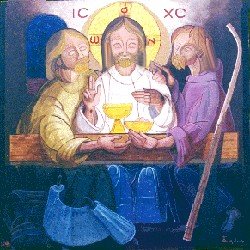
Shawui Month Page
Shawui Months
by David Clark

This Shawui calendar contains 12 lunar months and a seven day week observed according to the phases of the moon.
Although the Shawui contains 12 months, they are not the same as the modern western months. They begin on the New Moon, just like the Jewish, Islamic, Hindu and Buddhist calendars and consist of either 29 or 30 days each. (7 times in 19 years there is also a double month, called a "blue moon".) These 12 Shawui "Moonths" are not the same as the rabbinic months which do not necessarily follow according to astrological veracities, nor are they identical to the Ancient Roman and Greek lunar months, or to the ancient Egyptian Calendar system. In the Essene Calendar, the lunar month of Moznaim (Libra) must begin with a sun moon conjunction in the zodiacal sign of Libra. Likewise for all the moonths. The names of the 12 lunar "moonths", or months, are:
Extra Lunar Days
If the days of the week correspond to the four lunar quarters, then there are extra days at the end of each lunar month which are not counted amond the lunar quarters or lunar weeks. These are called Dark Moon days. (On these days the moon is dark and not visible.)
The lunar month consists of an average of 29.5306 days. There are four lunar-phases. The 1st Quarter starts at the New Moon, 2nd Quarter, 3rd Quarter starts at the Full Moon, 4th Quarter ends at the Dark Moon. Each lunar-phase contains 7 days, leaving 1.5306 "Dark Moon" days at the end of the lunar month. On these days the moon is not visible. Since lunar days are determined by the visual presence of the lunar orb, its absence during the Dark Moon represents a time of penance and darkness not counted among the lunar weekdays of the 28 illuminated days.
In calendar observance, the 1.5306 "Dark Moon" days at months end are
kept by either one or two Dark Day observance. Whether one or two Dark Fast
Days are observed is dependent on the date for the next New Moon. This is
determined by a sun-moon conjunction in the heavens. The zodiac sign in which
the New Moon conjunction occurs determines the type of lunar month.
(Occasionally two consecutive lunar months will both begin in the same zodiac
sign. This occurs about 7 times in a 19 year cycle. When this occurs, the
second month is called a "blue moon".)
Dark Moon Days
"Not one fragment of 4Qenastr contains a complete description of days 15 and 30 for the (lunar) months of 30 days and of day 29 for the (lunar) months containing 29 days…" (The Astronomical Books Of Enoch, by Milik. Pages 283-284)."and in night 28 of this (month, the Moon) is covered by six sevenths and a half, and there is subtracted from its light [six sevenths and a half. And then it emerges (from the same door as before) and it shines during] the rest of this night with a half of a seventh (part). And it waxes during this day to its entirety. And then it sets and enters [the … gate and is covered during the rest of] this day in its entirety and all the rest of its light is removed and its disc emerges, devoid of all light, hidden by the s[un ….". (4Qenastr,Pls. XXV-XXX).
Some of these ancient texts seem to indicate the 29.5 day lunar month devoid of day 29 and of day 30. This kind of accounting points to a normalized month of exactly 28 days. If a normalized month of 28 days was in use by ancient Semite society, then that respective calendar must have included certain non-counted days such as the Dark Moon days at the end of the month.
Extra Days In The Modern Jewish Calendar
The modern Jewish lunar calendar occassionally inserts an extra month after the 12th month, calling it Second Adar, instead of the more astrologically correct practice of "blue moons". The Jewish calendar also assigns either 29 or 30 days to each of its months, except Cheshvan which changes according to what adjustments need to be made.
"It seems that the early Semite Calendar - of weeks and of Moons - must have included periodic intermission days. This interesting and very ancient calendar was then based upon a simple progression of weeks always in-phase with the lunar-quarters."Observance of a once practiced lunar based calendar of weeks explains why (throughout very early Christian history) that a unilaterally agreed upon day for Christian assembly and worship was never in question. It simply was the very same lunar based calendar used by Jews throughout the Temple period of history- and this was very much true for the time of Jesus and of the Apostles! This explains why within the writings of the Gospel authors (who coincidentally were Jews) terms such as: 'the Lord's Day', or 'the first day of the week' were used and understood. It also explains why other early Christian writers referred to calendar terms such as, : 'the eighth day', or 'the Day of the Sun', or 'Sunday'."
The Nazarenes of Mount Carmel
Copyright
© 1999-2006. All rights
reserved.
The Essene Numerology
Chart | Ministerial Training
Course